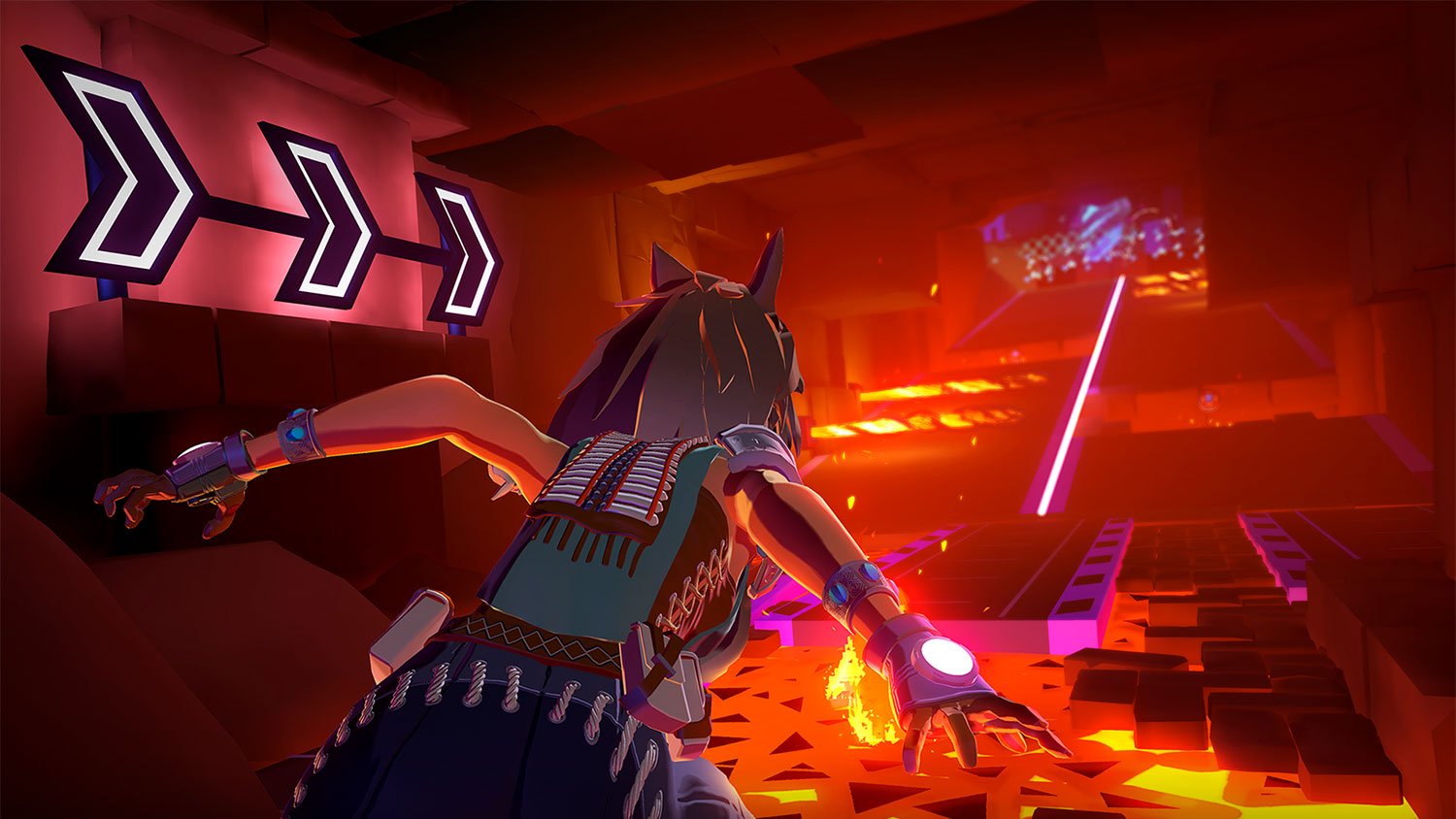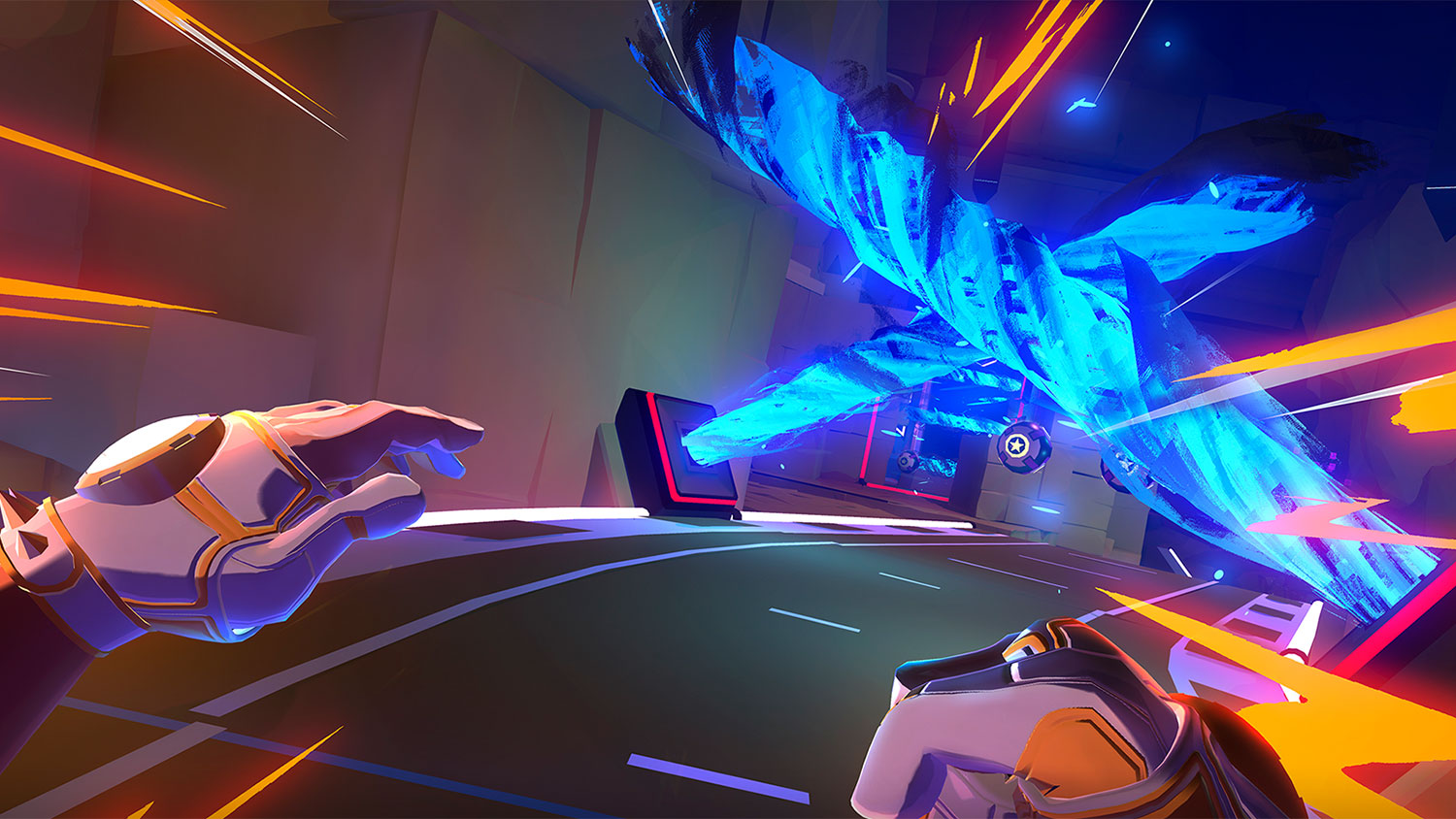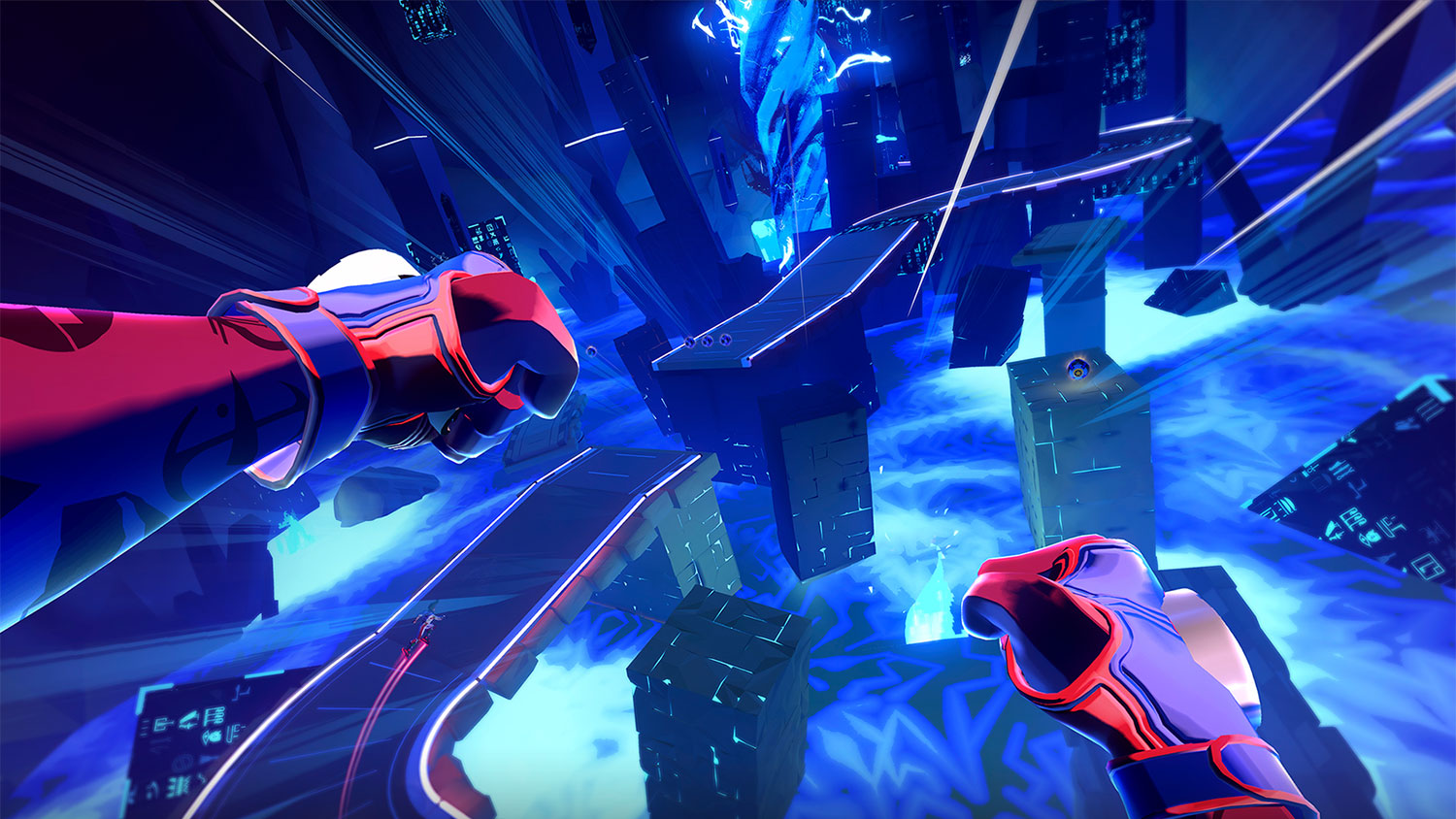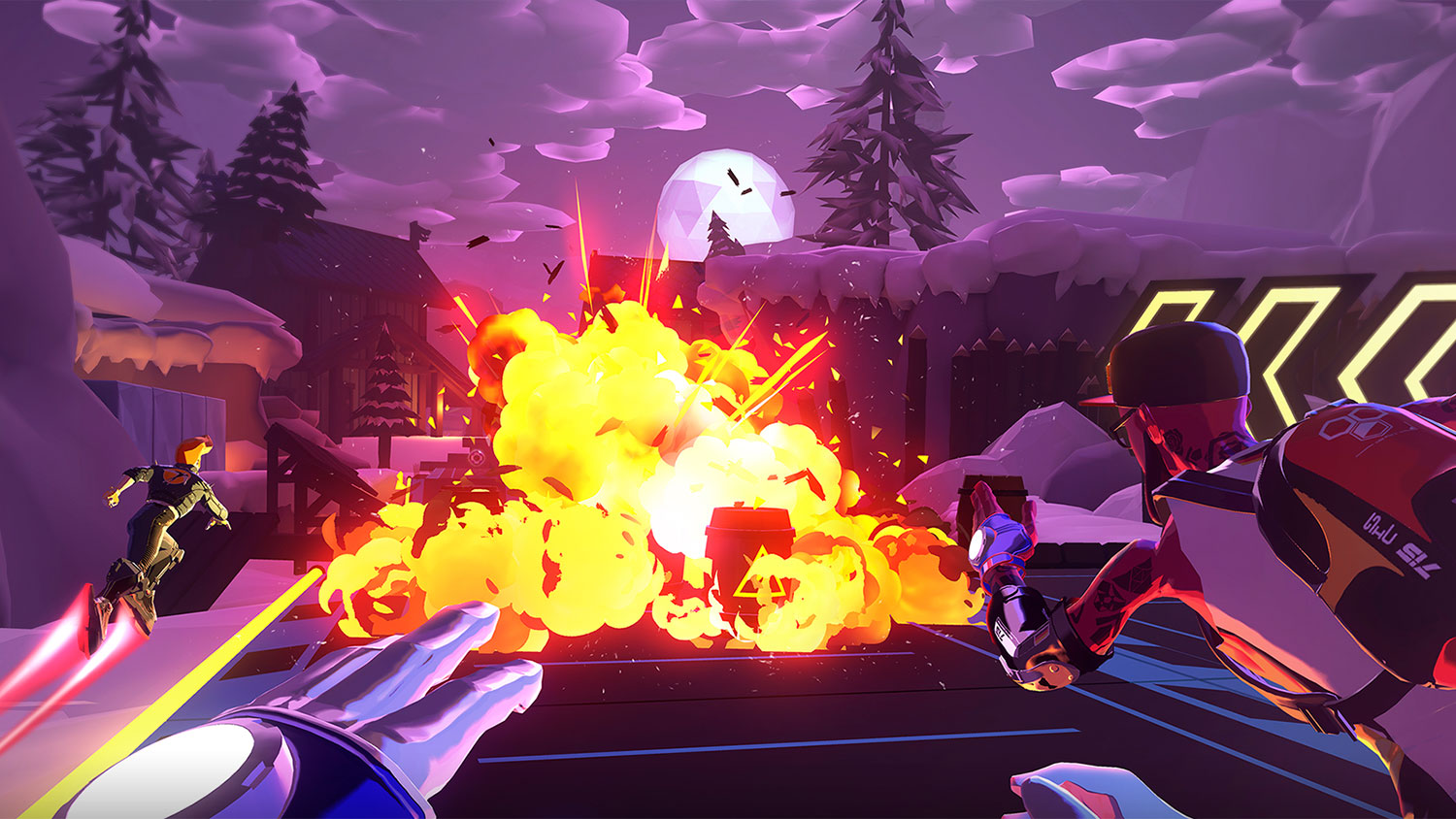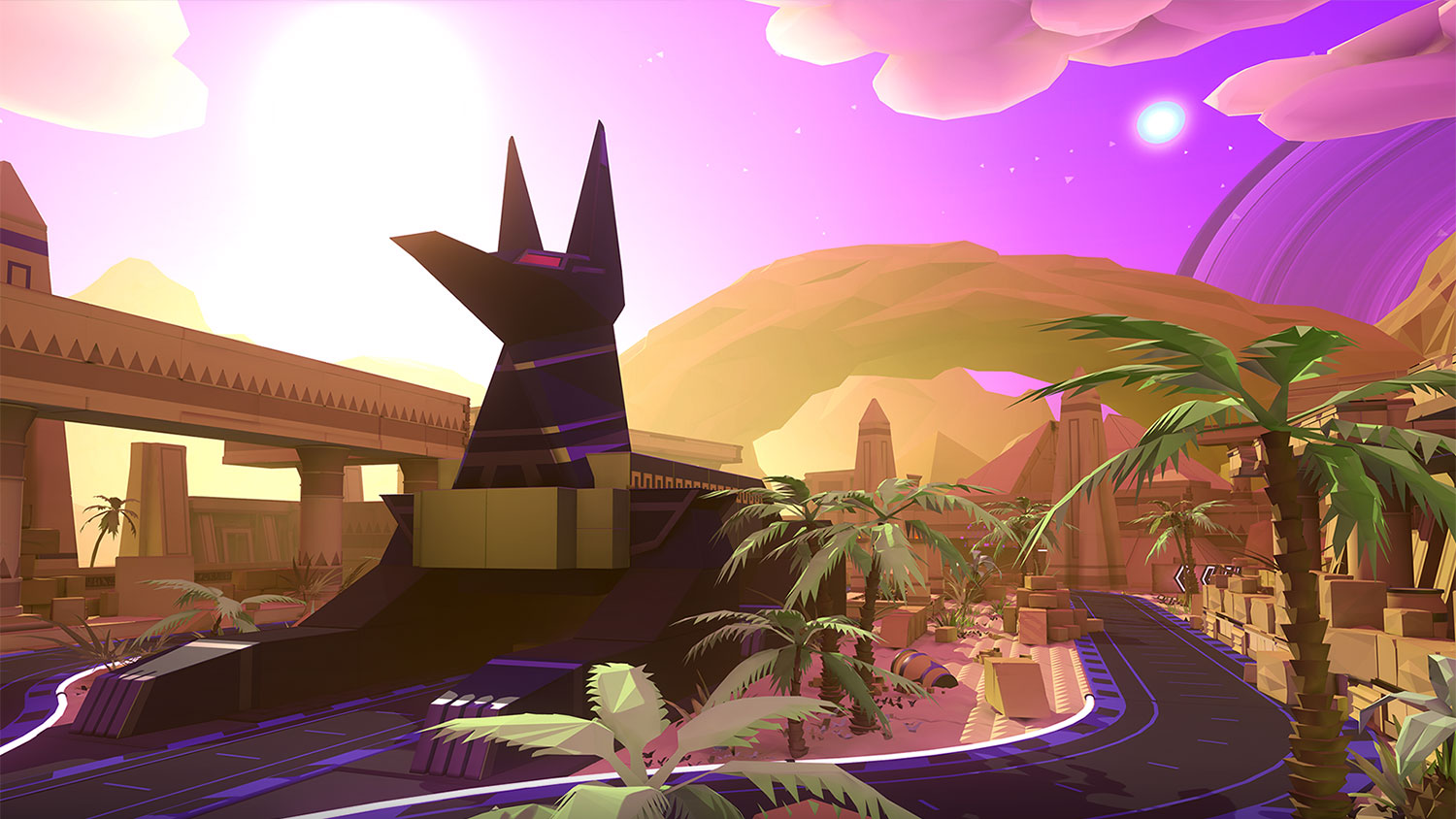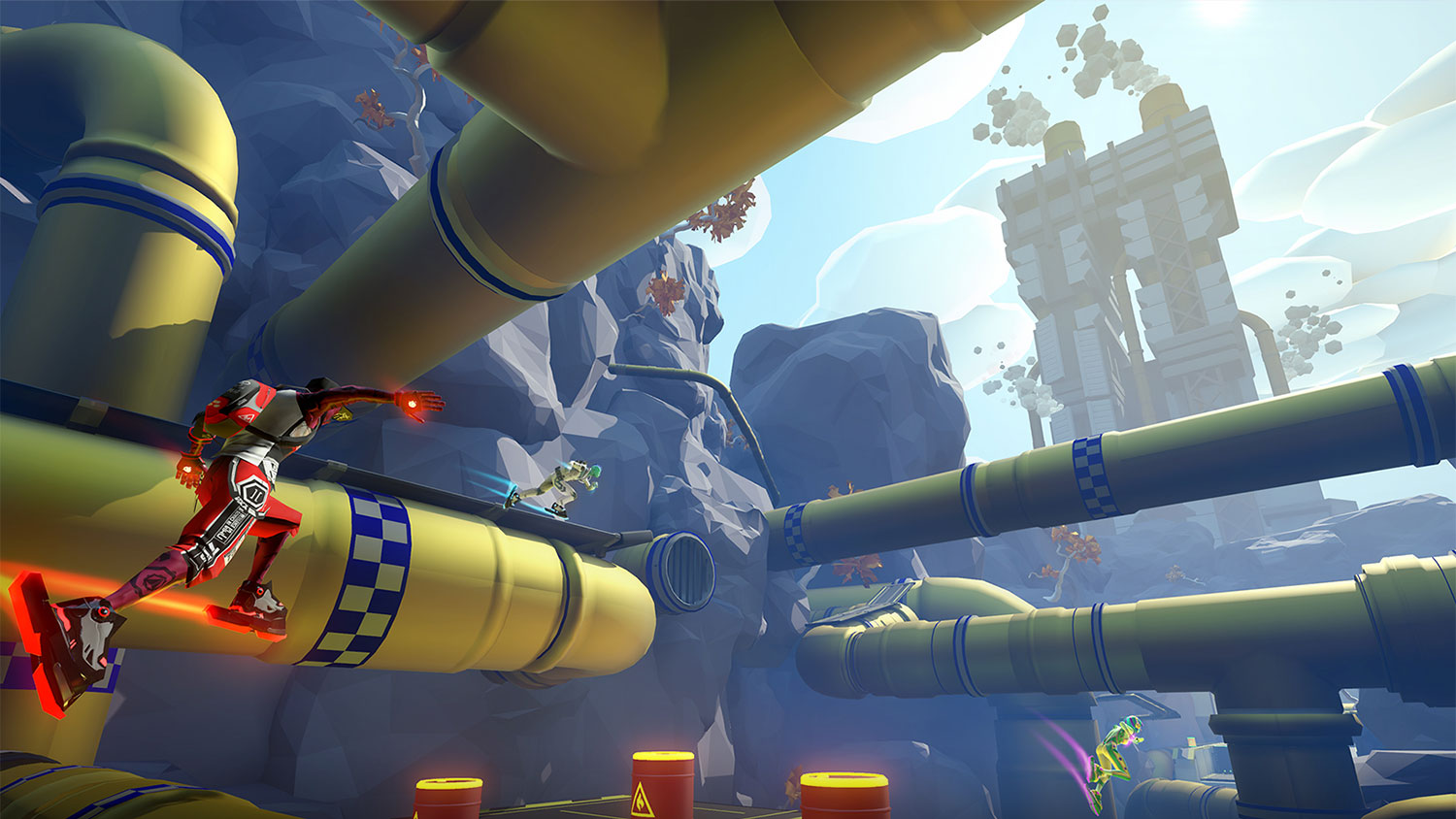Sprint Vector could only exist in VR. On the surface, it’s a arcade racer with tropes familiar to anyone who has played Mario Kart. When strapped into the headset, though, it offers an experience unlike any other we’ve played before.
Survios’ follow-up to Raw Data requires that you keep your arms in near constant motion to avoid obstacles, maneuver sharp turns, and scope out a viable path towards the finish line, all while jetting forward at blazing speeds.
On a moment-to-moment basis, Sprint Vector thrills and excites thanks to intuitive controls that immerse you in its heart-pounding action. It’s as much of a workout as it is a video game: Your arms will turn to jelly and might be dizzy by the time you cross the finish line. Sprint Vector’s greatest strength, however, becomes its biggest problem. In isolation, running and jumping and climbing with motion controllers feels great, but the game tries to do too much with its quality parts.
Run faster than Forrest
A room-scale VR experience, Sprint Vector is primarily controlled by myriad arm gestures. On Oculus Rift, you must have a pair of Oculus Touch controllers to play; on HTC Vive, two tracker controllers; on PSVR, two Move controllers. It employs motion controls more as a means for simulating vigorous body movement than pointing and clicking about a virtual playing field — although you will do that on occasion, too.
As a game revolving around fluid, constant motion, Sprint Vector thankfully has competent controls. The basic movement is very similar to running — an up and down motion, alternating arms with each stride. Technically, you’re wearing vector blades (essentialy sci-fi roller blades) but in first person it just feels like you’re running very quickly. Releasing the trigger on each control at the right spot — just past your hip — determines your speed.
While the pendulum motion takes up the majority of the action, the parkour-style tracks include obstacles, jumps, walls, and an excess of sharp turns that ask you to dig into your bag of tricks. Sometimes you’ll have to look towards the sky to climb a wall, or you’ll have to fling yourself upwards, or turn the controllers to the side while pressing a pair of buttons to drift around bends. Other times, you have to clear gaps by flying — executed appropriately by holding your arms out like Superman, twisting and turning the controllers to change altitude and direction.
On a moment-to-moment basis, Sprint Vector thrills and excites.
It’s truly impressive how many different mechanics the game manages to spin out of basic arm movements. Even though we occasionally found that what played out on screen didn’t match the movements we made, Sprint Vector has relatively sound controls. Three tiers of tutorials do a good job teaching the core mechanics, although putting them together on the real raceway still takes some time.
At a base level, Sprint Vector makes you really feel as if you are running faster than Usain Bolt, it grants the illusion that you are flying through the air, and it makes you think you are truly pulling yourself up a tall mountain. For that, it’s a VR accomplishment, as it places you inside a visceral experience that could not possibly exist, in any effective manner, outside of the technology.
The sum doesn’t equal its parts
Sprint Vector has 21 tracks — 12 traditional venues for standard races and 9 obstacle courses. For an arcade racer, that’s a pretty good number of tracks to explore. Unfortunately, many of them start to blur together simply because you are moving too fast and doing too much with your arms to really get to know your surroundings.

Essentially, Sprint Vector is a very unique game that also has a set of problems uniquely its own. All of your movements — the long strides, the death-defying jumps, the well-timed drifts — feel like little, individual successes, but stringing a series of different movements together too frequently feels like a chore.
Even though most of the work is done with your arms, you’ll wind up turning your body all over the place because of the constant changes in direction and movement requirements. By the end of a race, you probably won’t even be facing your TV. And it’s also unlikely that you’ll be near the same spot you started.
Although that may not sound like a problem for a game that is literally set in the backdrop of an over-the-top TV game show — complete with a host that has a TV for a head — but it undercuts what makes Sprint Vector fun to begin with. By littering tracks with too much stuff, too many changes that require a different movement, Sprint Vector’s clever and engaging motion controls sometimes erode into frantic flailing.
Sprint Vector’s clever and engaging control system sometimes erodes into a frantic display of arm flailing.
That clutter is most noticeable in the 9 obstacle courses, but even the traditional racetracks feel like they could have greatly benefited from a less-is-more design philosophy. With barrels, rocks, moving blocks, waste spills, and even small rises in tracks that block you from moving forward, Sprint Vector’s courses have far too much going on. The framework is here, but needless obstacles interrupt the flow and distract from a mechanically sound foundation.
The computer AI even seems to acknowledge that you’re likely to fumble through the densely packed tracks. If you find yourself sputtering, you can often see AI racers moving in circles, or even moving backwards to wait for you to catch up. We think the AI, like many arcade racers, was designed to boost your confidence and potentially teach you about each track by sticking with you, but it’s certainly odd to watch unfold.
That said, Sprint Vector was obviously designed with online multiplayer in mind. Competitive races throw items into the mix such as rocket-fueled boosts (giving your arms a much needed break) and projectiles to sling at other racers. The items align Sprint Vector closely to cart racers like the Mario Kart series, but it’s hard to employ them efficiently while worrying about the constant demands of each track.
If nothing else, Sprint Vector serves as a surprisingly good alternative workout. Fun can be had, but it can quickly turn into frustration.
We reviewed Sprint Vector (PSVR) using a retail copy of the game provided by the publisher.
